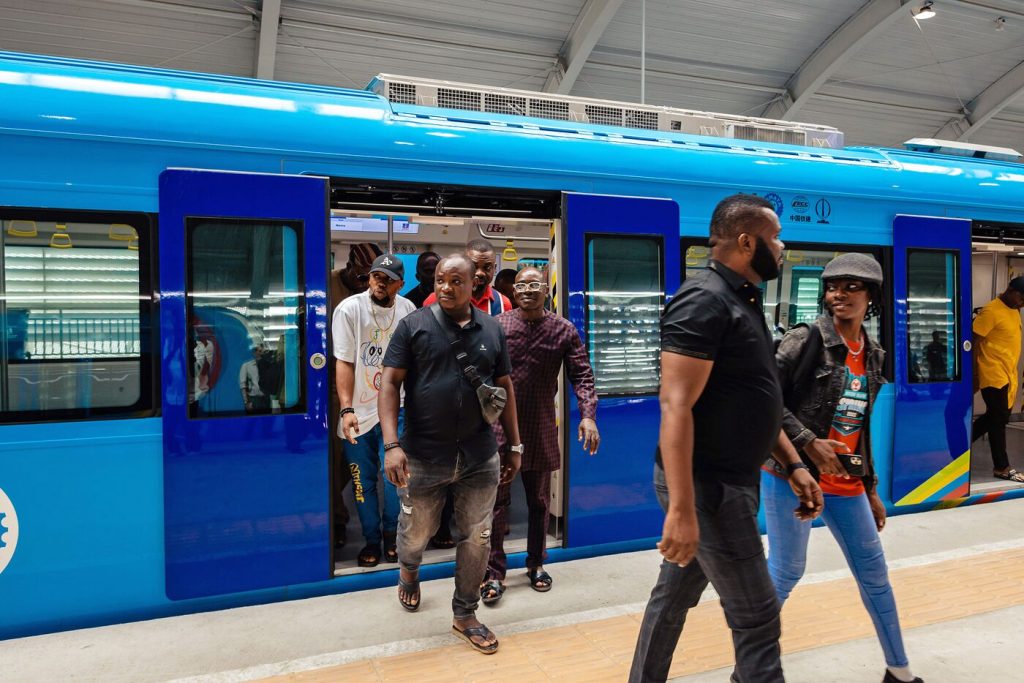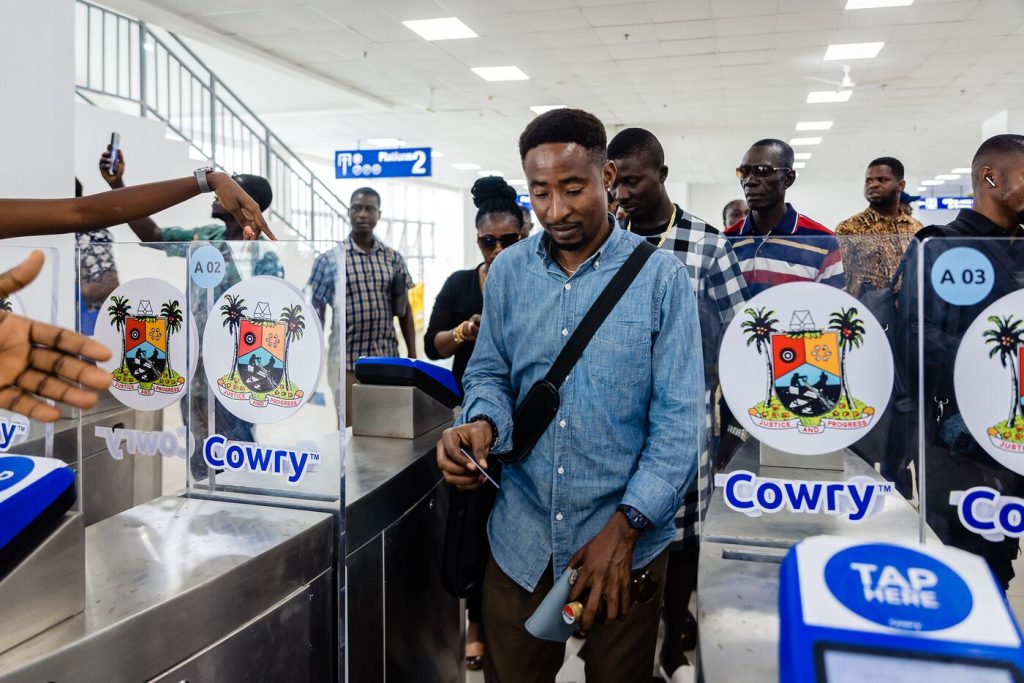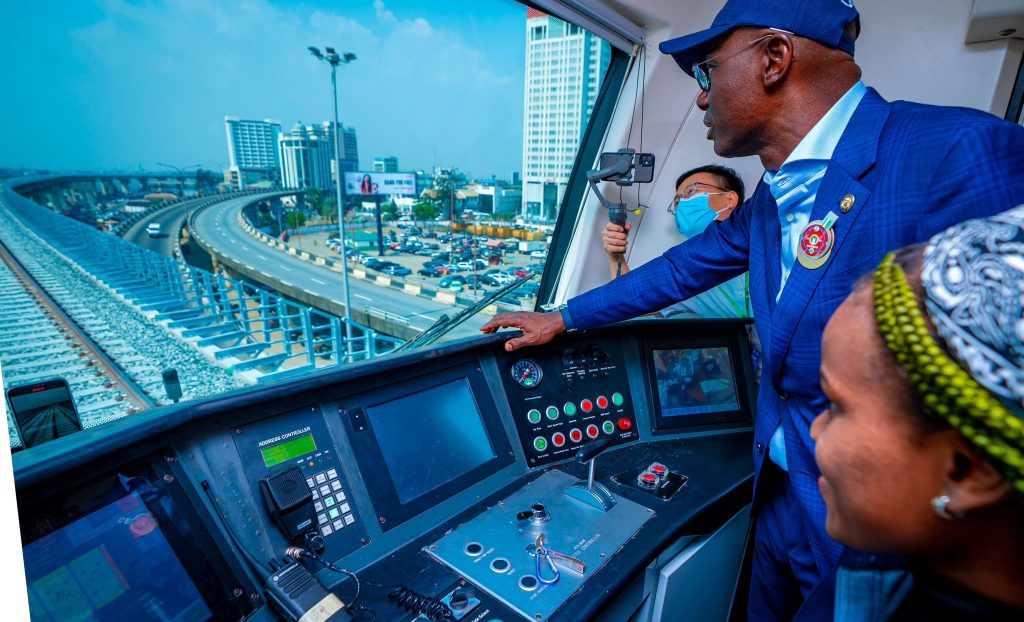The city of Lagos Nigeria is currently home to over 20 million people and counting, and has been was recently been tagged as the city with the world’s worst traffic, according to data from Numbeo, a crowd-sourced online database. But could that change with the official launch and commencement of operation of the Lagos Blue Line? The line was built by the China Civil Engineering Construction Corporation (CCECC).
The Lagos Blue Line is a major milestone in the development of Lagos’ public transportation system. It is a modern, efficient, and environmentally friendly way to travel around the city. The line is expected to have a significant impact on real estate, the economy, and the environment.
The Lagos Blue Line: A New Hope for Public Transportation in Lagos. Lagos Blue Line passengers onboarding Photographer:

The Lagos Blue Line is an electric train or rapid transit line that runs in, it is the first electric rapid transit line in Nigeria and West Africa, and it is indeed a significant milestone in the development of the city’s public transportation system. The Blue Line is 27 kilometers long and has 13 stations at the moment with plans in place to build more stations in the future.
Routes & Capacities
The rail runs from Okokomaiko in the west all the way to Marina in the east, with intermediate stations at National Theatre, Iganmu, Alaba, and Mile 2(for now). The trains are equivalent to 10 cars long and have the capacity to carry up to 1,200 passengers each.
This means that the Blue Line is capable of carrying up to 500,000 passengers a day! The journey time from Okokomaiko in the western part of Lagos to Marina in the east is expected to be 35 minutes. Which is much faster than the current travel time by road, which can take up to 3 hours.
The Blue Line would have a significant positive impact on traffic congestion in Lagos. It is estimated that the line will reduce traffic congestion by up to 20%. The Blue Line is also expected to have a positive impact on the environment. It is a zero-emissions mode of transportation, which means that it will not contribute to air pollution.
How to book a ride on the Lagos Blue Line?

To book a ride on the Lagos Blue Line you’ll use a contactless payment system called the Cowry Card. The Cowry Card is a prepaid card that can be purchased at any Lagos Metropolitan Area Transport Authority (LAMATA) station.
The card can be topped up at any LAMATA office or station as well. To pay for a ride on the Blue Line, simply tap your Cowry Card on the fare gate. The fare will be deducted from your card balance. Passengers will pay only half of the recommended 750 naira ($0.97) for a trip, with the government subsidizing part of the cost to cushion against the rising cost of living, fuel subsidy, and other economic challenges according to the agency.
The Cowry Card is also used for the Bus Rapid Transit (BRT) system in Lagos. This means that you can use the same card for both the Blue Line and the BRT. If you do not have a Cowry Card, you can also pay for a ride on the Blue Line in cash.
However, this is not recommended because it can be time-consuming and inconvenient.
How would the Lagos Blue Line directly impact real estate?
The Blue Line is expected to have a significant impact on real estate in Lagos. The line is expected to make areas along its route more attractive to businesses and residents, which will increase property prices. According to a study by the World Bank which found that the opening of a rapid transit line in São Paulo, Brazil, led to an increase in property prices within 1 kilometer of the line of up to 30%.
Another study by the Asian Development Bank found that the opening of a rapid transit line in Manila, Philippines, led to an increase in property prices within 500 meters of the line of up to 15% Impact on Land and Property Prices in Lagos Nigeria the Blue Line is expected to have a significant impact on land and property prices along its route.
A study by the Lagos Metropolitan Area Transport Authority (LAMATA) found that property prices within 500 meters of a rapid transit station increased by an average of 20% after the station opened. The study also found that the impact was even greater in areas with high demand for property, such as areas close to commercial centers or major transportation hubs.
For example, property prices within 500 meters of the Marina station on the Blue Line are expected to increase by up to 30%. The impact of the Blue Line on land and property prices is likely to be even greater in the long term. As the line becomes more popular and the surrounding areas develop, property prices are expected to continue to rise.
Searching for properties for sale within a prime location?
On a final note:

The Lagos Blue Line is expected to have a significant impact on the real estate market in Lagos. The blue line is expected to make areas along its route more attractive to businesses and residents, which will impact the increase in property prices. The line is also expected to create new jobs and opportunities, that will boost the local economy.
But also, in the pipeline from the Lagos state government are the Green Line and the Red Line.
The Red Line:
The Red Line is a 37-kilometer (23 mi) rapid transit line that will run from Agbado in the north of Lagos to Oyingbo in the south. The line will have 13 stations, including Agbado, Iju, Agege, Ikeja, MMIA International, MMIA Domestic, Oshodi, Mushin, Yaba, Ebute-Metta, Iddo, Ebute Ero, and Marina. The Red Line is currently under construction and is expected to be completed in 2024.
The Green Line:
The Green Line is a 27-kilometer (17 mi) rapid transit line that will run from Lekki in the east of Lagos Island to Ajah in the west. The line will have 12 stations, including Lekki, Elegushi, Ikate, and Ajah. The Green Line is still in the planning stages. The Lagos State government is currently conducting a feasibility study for the line. The line is expected to be completed in 2027.
Please use the comment section for your questions or contributions. Thank you for reading. We hope you got valuable for your time, Support us by following and sharing this post on social media.



